| Former Residence of Cai Yuanpei | |
|---|---|
蔡元培故居 | |
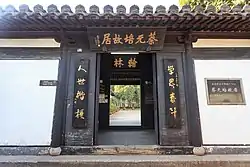 Entrance. | |
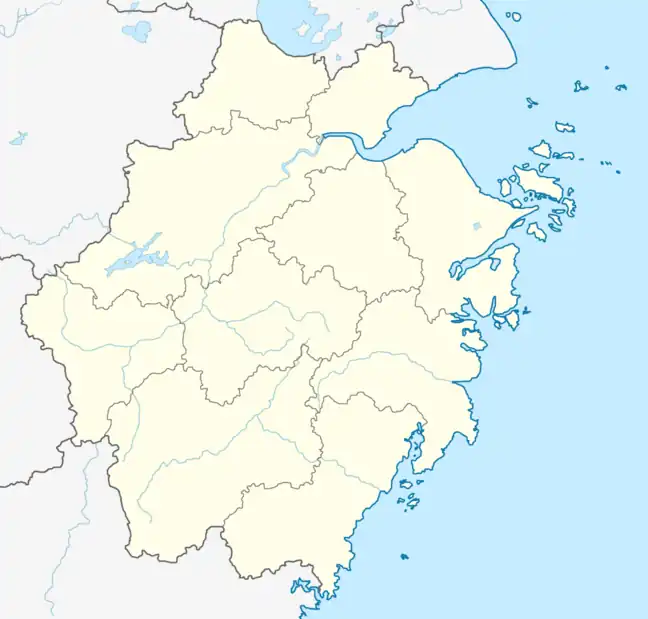 | |
| General information | |
| Type | Traditional folk houses |
| Location | Yuecheng District, Shaoxing, Zhejiang |
| Country | China |
| Coordinates | 30°00′33.84″N 120°34′45.84″E / 30.0094000°N 120.5794000°E |
| Completed | Qing dynasty (1644–1911) |
| Owner | Shaoxing Municipal Government |
| Height | |
| Architectural | Chinese architecture |
| Technical details | |
| Material | Bricks and wood |
| Floor area | 1,004 m2 (10,810 sq ft)[1] |
| Grounds | 1,856 m2 (19,980 sq ft)[1] |
The Former Residence of Cai Yuanpei or Cai Yuanpei's Former Residence (Chinese: 蔡元培故居; pinyin: Cài Yuánpéi Gùjū) is the birthplace of Cai Yuanpei, a Chinese educator, esperantist, president of Peking University, and founder of the Academia Sinica.[2]
History
The former residence was originally built by Cai Jiamo (蔡嘉谟), the grandfather of Cai Yuanpei, in the reign of Daoguang Emperor (1821–1850) in the Qing dynasty (1644–1911).[3]
On 11 January 1868, Cai Yuanpei was born here.[1]
On 25 June 2011, it was listed among the fifth group of "State Cultural Protection Relics Units" by the State Council of China.
Architecture
It has a building area of about 1,004-square-metre (10,810 sq ft), embodies buildings such as the main hall, the gate and the reception hall.
Gallery
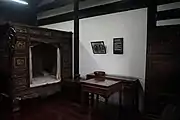 Bedroom of Cai Yuanpei's parents
Bedroom of Cai Yuanpei's parents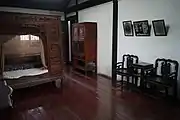 Cai Yuanpei's bedroom
Cai Yuanpei's bedroom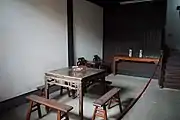 Dining room
Dining room Reception room
Reception room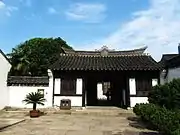 Entrance
Entrance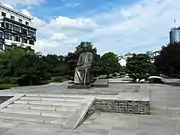 Statue of Cai Yuanpei
Statue of Cai Yuanpei
References
- 1 2 3 蔡元培故居绍兴特色浓郁 周恩来亲撰挽联. 163.com (in Chinese). 2006-03-04.
- ↑ 评论:绍兴蔡元培故居,盛极一时后的凋零. chinanews.com (in Chinese). 2012-12-19.
- ↑ 蔡元培故居. china.com.cn (in Chinese). 2006-11-07. Retrieved 2020-01-06.
This article is issued from Wikipedia. The text is licensed under Creative Commons - Attribution - Sharealike. Additional terms may apply for the media files.